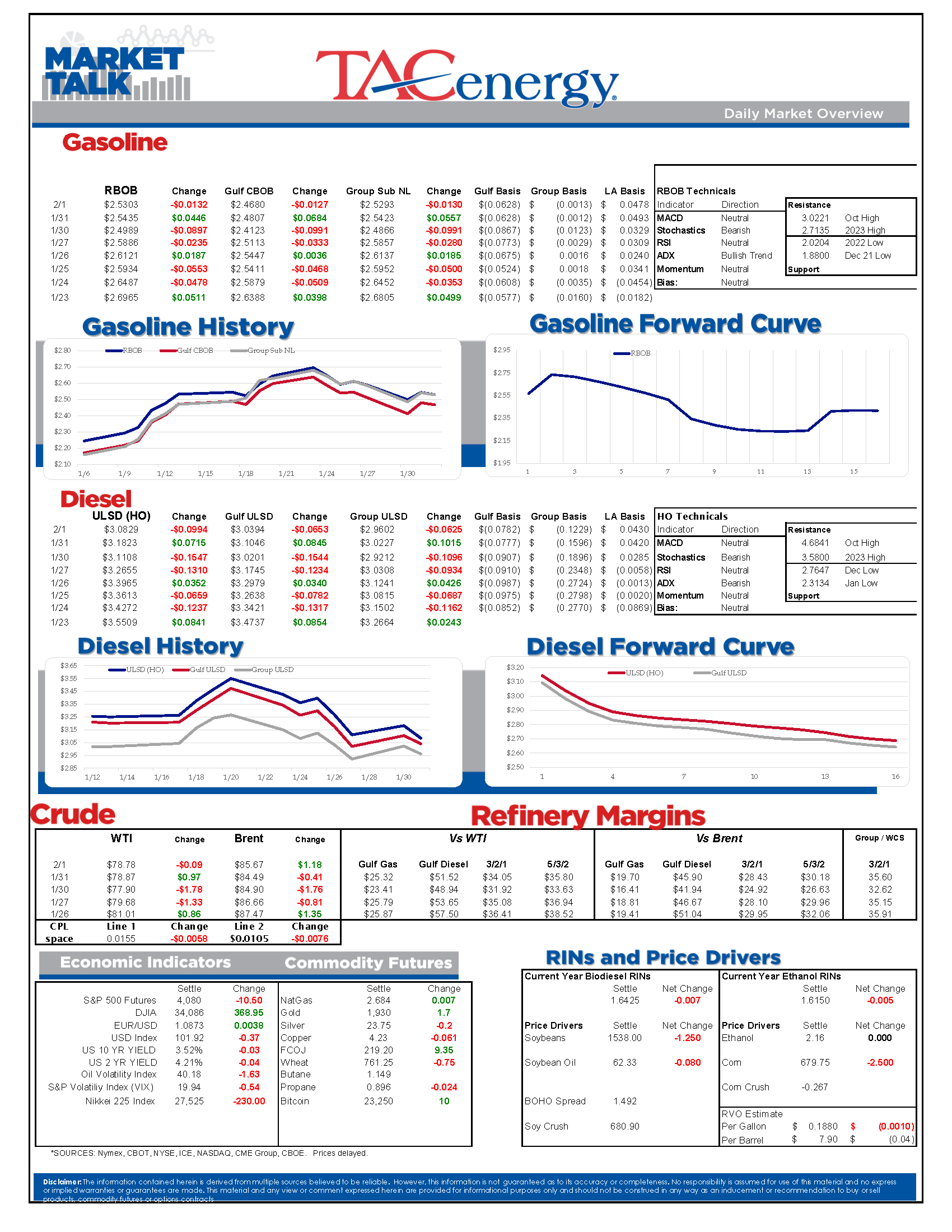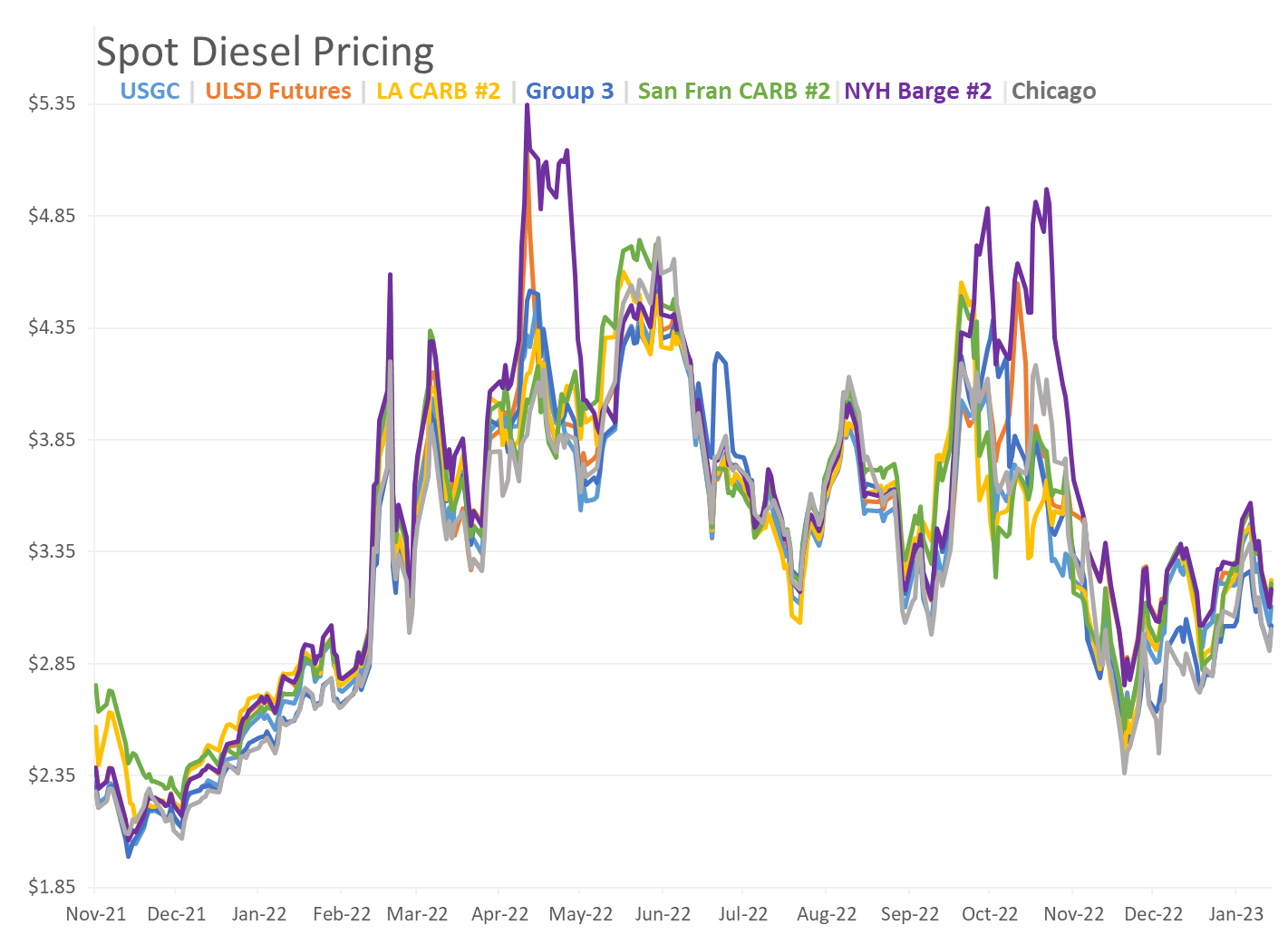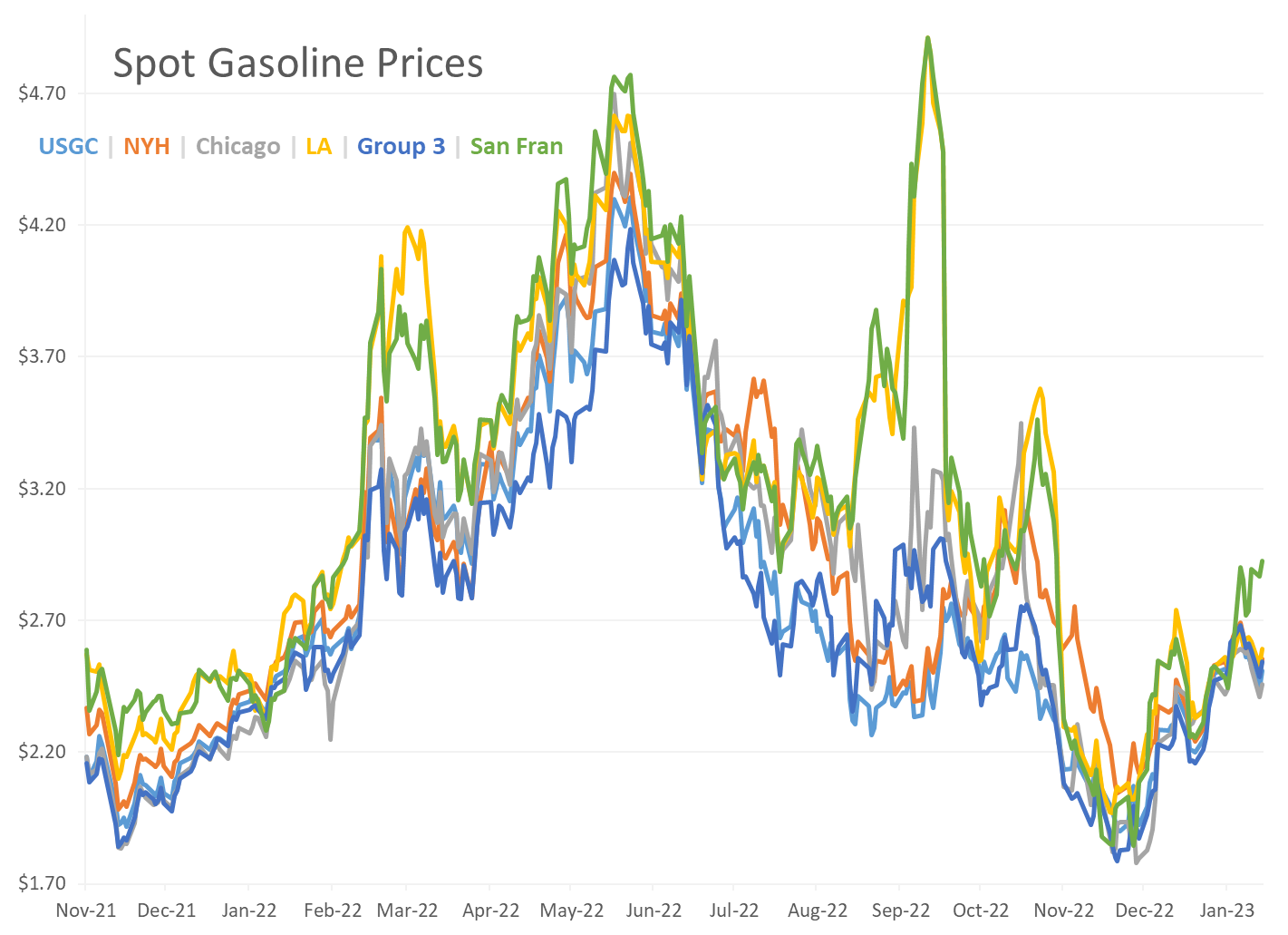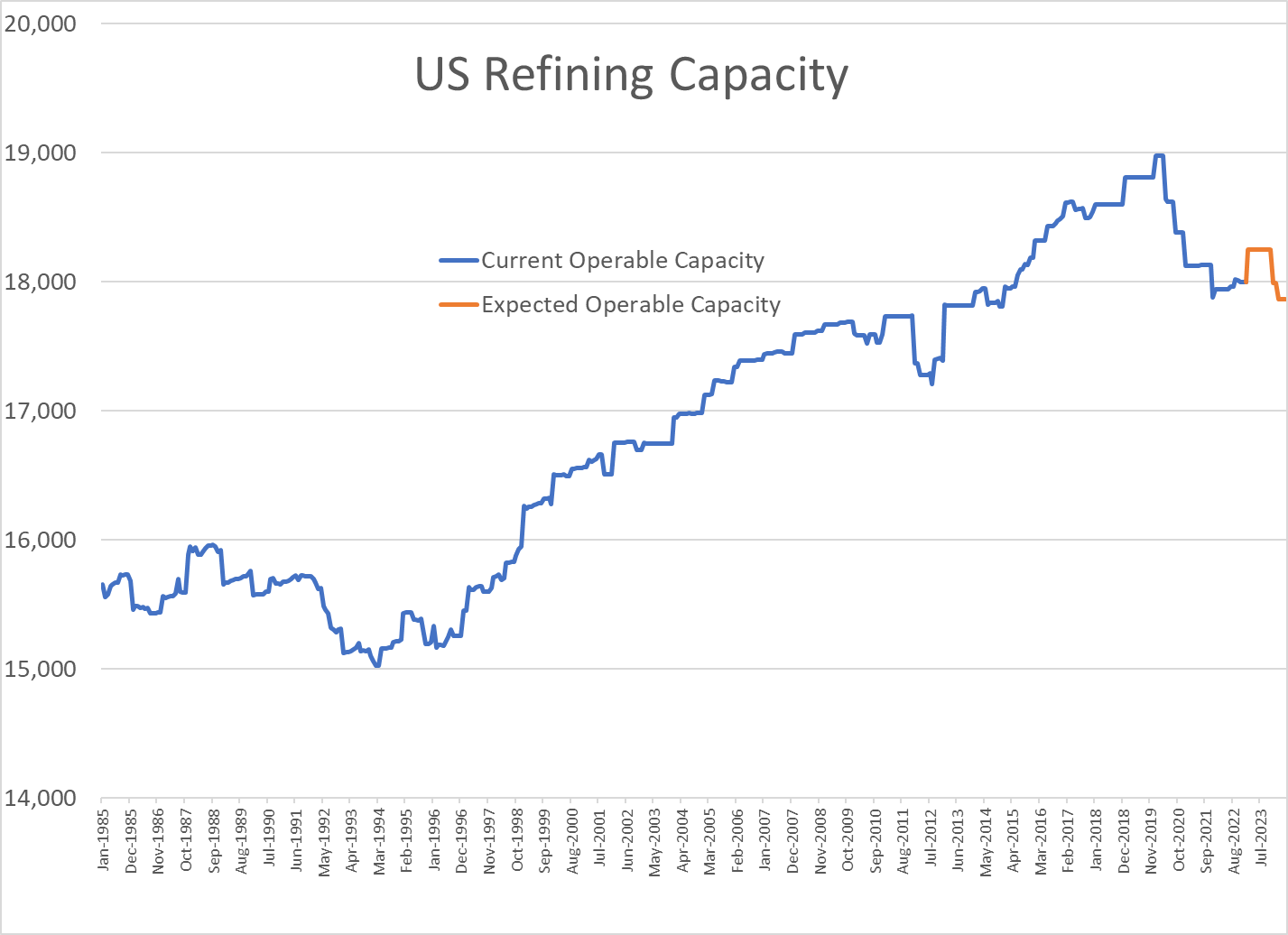New Month Sees New Downward Pressure, Market Awaits EIA Report & OPEC Meeting

After a week of heavy selling, refined products had an emphatic recovery rally to end January’s trading, only to start February off on their heels once again. ULSD prices bounced 15 cents off of Tuesday’s low trade, earning back roughly 20% of the losses seen in the previous 5 sessions, and keeping the upward trendline started back in December intact.
Both products pulled back in the overnight session after the API reported more inventory builds across the board last week. Oil inventories were said to increase by 6.3 million barrels, while gasoline stocks were up 2.7 million and distillates were up 1.5 million. The rise in oil inventories is likely a sign that refinery runs remain below expected levels for a 6th week following the Christmas blizzard and several other unplanned maintenance events. The fact that refined products continue to build despite those slower refinery runs is likely a sign that demand remains in the winter doldrums, although it’s impossible to say how much is caused by the parade of winter storms, and how much is a sign of a slowing economy.
The EIA’s weekly report is due out at its normal time this morning, and should give us a good update on the status of refinery output. Speaking of which, Exxon noted in its earnings call that the Beumont refinery expansion is on pace to bring another 250mb/day of output online in Q1, which is the largest increase in capacity in a decade for the US, and the first of more than 200mb in 4 years. That’s great news for those hoping to see some relief in the supply network this year, but the bad news is that we’re expected to lose another 250mb/day later this year when the Houston Refining facility is shuttered, and another 130mb/day early in 2024 when P66 converts its Rodeo CA facility to RD production
OPEC & Friends are meeting today to discuss their output quotas. That meeting has been largely dismissed by many in the market since it’s being held virtually, which has become a symbol that the cartel is not planning to make any changes to its agreements. In addition OPEC’s president is making it clear that they want to see more data on production and consumption before deciding on a policy change.
San Francisco gasoline prices were already the most expensive in the country after a basis rally last week to a 30 cent premium vs futures as the West Coast begins the spring RVP transition. Bay Area basis values jumped again Tuesday after reports of a fire at the Martinez refinery, although later it was suggested that fire would not impact operations at the plant as it occurred out equipment that was no longer in service.
Click here to download a PDF of today's TACenergy Market Talk.
Latest Posts
Week 16 - US DOE Inventory Recap
Energy Markets Trading Quietly In The Red As Ethanol Prices Rally To Five-Month High
The Struggle For Renewable Producers Continues As A Rapid Influx Of Supply And Crashing Credit Prices Make Biodiesel
After Years Of Backwardation, Diesel Prices Have Slipped Into Contango Over The Past Week
Social Media
News & Views
View All
Week 16 - US DOE Inventory Recap

Energy Markets Trading Quietly In The Red As Ethanol Prices Rally To Five-Month High
Energy markets are trading quietly in the red to start Wednesday’s session after a healthy bounce Tuesday afternoon suggested the Israel-Iran-linked liquidation had finally run its course.
There are reports of more Ukrainian strikes on Russian energy assets overnight, but the sources are sketchy so far, and the market doesn’t seem to be reacting as if this is legitimate news.
Ethanol prices have rallied to a 5-month high this week as corn and other grain prices have rallied after the latest crop progress update highlighted risks to farmers this year, lower grain export expectations from Ukraine, and the approval of E15 blends this summer despite the fact it pollutes more. The rally in grain and renewables prices has also helped RIN values find a bid after it looked like they were about to test their 4-year lows last week.
The API reported small changes in refined product inventories last week, with gasoline stocks down about 600,000, while distillates were up 724,000. Crude oil inventories increased by 3.2 million barrels according to the industry-group estimates. The DOE’s weekly report is due out at its normal time this morning.
Total reported another upset at its Port Arthur refinery that’s been a frequent flier on the TCEQ alerts since the January deep freeze knocked it offline and damaged multiple operating units. This latest upset seems minor as the un-named unit impacted was returned to normal operations in under an hour. Gulf Coast basis markets have shrugged off most reports of refinery upsets this year as the region remains well supplied, and it’s unlikely we’ll see any impact from this news.
California conversely reacted in a big way to reports of an upset at Chevron’s El Segundo refinery outside of LA, with CARBOB basis values jumping by more than a dime. Energy News Today continued to show its value by reporting the upset before the flaring notice was even reported to area regulators, proving once again it’s ahead of the curve on refinery-related events. Another industry news outlet meanwhile struggled just to remember where the country’s largest diesel seller is located.
Click here to download a PDF of today's TACenergy Market Talk

The Struggle For Renewable Producers Continues As A Rapid Influx Of Supply And Crashing Credit Prices Make Biodiesel
The sigh of relief selloff continues in energy markets Tuesday morning, with gasoline prices now down more than 20 cents in 7 sessions, while diesel prices have dropped 26 cents in the past 12. Crude oil prices are within a few pennies of reaching a 1 month low as a lack of headlines from the world’s hot spots allows some reflection into the state of the world’s spare capacity for both oil and refined products.
Gasoline prices are trading near a 6-week low this morning, but still need to fall about another nickel in order to break the weekly trendline that pushed prices steadily higher since December. If that trend breaks, it will be safer to say that we saw the end of the spring gasoline rally on April 12th for the 2nd year in a row. Last year RBOB futures peaked on April 12 at $2.8943 and bottomed out on May 4th at $2.2500. The high (at this point) for this year was set on April 12th at $2.8516, and the low overnight was $2.6454.
It’s not just energy commodities that are seeing an unwind of the “flight to safety” trade: Gold prices had their biggest selloff in 2 years Monday and continue to point lower today. Just how much money poured into commodities in the weeks leading up to the direct confrontation between Israel and Iran is unclear, but we have seen in year’s past that these unwind-events can create a snowball effect as traders can be forced to sell to cover their margin calls.
Supply > Demand: The EIA this morning highlighted the record setting demand for natural gas in the US last year, which was not nearly enough to offset the glut of supply that forced prices to a record low in February. A shortage of natural gas in Europe was a key driver of the chaotic markets that smashed just about every record in 2022, and an excess of natural gas supply in Europe and the US this year is acting as a buffer, particularly on diesel prices.
The struggle for renewable producers continues as a rapid influx of supply and crashing credit prices make Biodiesel, RD and SAF unprofitable for many. In addition to the plant closures announced in the past 6 months, Vertex Energy reported Monday it’s operating its Renewable Diesel facility in Mobile AL at just 50% of capacity in Q1. The truly scary part for many is that the $1/gallon Blender's tax credit ends this year and is being replaced by the “Clean” Fuel production credit that forces producers to prove their emissions reductions in order to qualify for an increased subsidy. It’s impossible to say at this point how much the net reduction will be for domestic producers, but importers will get nothing, and at current CI values, many biodiesel producers may see their “blend credit” cut by more than half.
Click here to download a PDF of today's TACenergy Market Talk.




